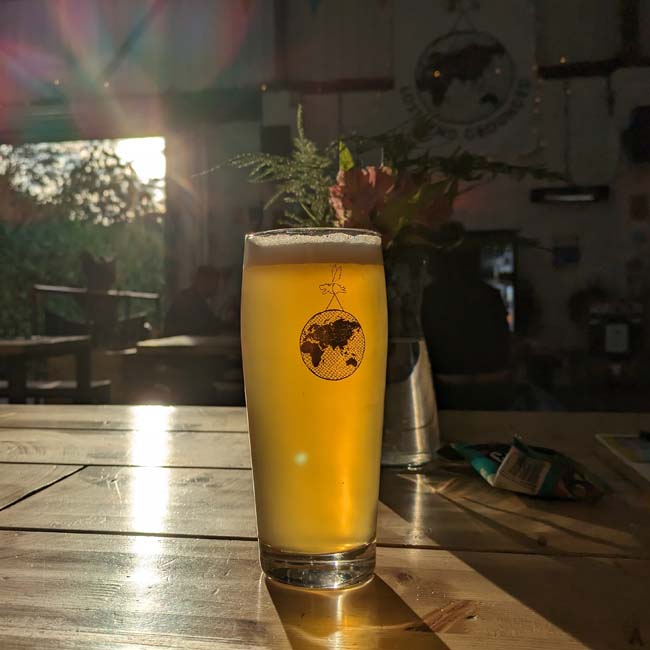It was inevitable that having written about beer feeling unexciting we’d encounter a run of beer-of-the-year contenders.
First there was an Italian Pilsner at Zero Degrees in Bristol.
Bearing in mind Italian Pilsner was basically a mythical entity to us at the start of this year, it struck us as absolutely convincing.
It was extremely bitter and desert dry despite its 6.4% ABV. It had the requisite white wine quality with suggestions of elderflower and lemon.
On a warm evening, after you’ve schlepped up Christmas steps, it’s exactly the glass of lager you dream of drinking.
OK, so beer can still excite us, we’re not dead yet, we said.
Then, a few days later, we found ourselves at The Pembury Tavern in Hackney, East London, and thought, sigh, we’d better try Five Points Gold, out of grim duty.
We love some Five Points beers (Railway Porter, the sadly defunct Pils, and Pale) but don’t get on with their Best Bitter. We find it muddy and confused. Gold, we assumed, would be like that, but more watery (it’s 3.4%) and less interesting.
But, blimey, it was good. We spent quite a bit of time thinking about Boddington’s and Young’s Ordinary as they were in the past – very pale, very bitter, mysteriously alluring.
That this beer, and only this beer, was pulled through a sparkler made us wonder if it might be a deliberate homage to the North.
We pulled out some of the old shopping basket descriptors: tangerine, peach, grape… But, really, the appeal was its clarity, cleanness, and balance. A real Swiss watch of a beer, perfectly put together.
Despite the presence of cask Railway Porter, a favourite of ours, we stuck to Gold, and left the pub several hours later with just the slightest buzz on.

Last Friday, as we often do, we wandered to the Lost & Grounded taproom for a couple of pints between work and tea.
It feels like most weeks there’s some new lager substyle on offer and this time it was 10 Years On Land, a Landbier brewed in collaboration with The Royal Navy Volunteer pub.
Again, we ordered it because it was new, and we felt vaguely obliged, but it was love at first slurp.
For one thing, it proves that a beer can be hazy and still somehow taste clean – or maybe fresh is the better word.
It took us back to last autumn, trolling around Nuremberg and writing one tasting note after another that said something like: “Simple, but so fresh.”
There was a bit of lemon barley water about it, some grass and crunchy grain, and a decent amount of bitterness. At 4.4% it made us think, you know what? Dinner can wait.
Finally, on Saturday, we popped out to another local taproom because we’d heard a rumour that Moor Brewing Smoked Lager might be available.
It’s not quite as magical as Schlenkerla Helles but, on draught, was certainly fresher than the bottles of Schlenkerla we get in the UK.
It’s smokier than last year, or at least struck us that way, pushed just to the edge of too much. Or, in other words, just right.
Drinking it in the sun, surrounded by the hops that grow over the fences and street signs by the brewery, we thought, perhaps, we heard the echoes of an oompah band across the industrial estate.



